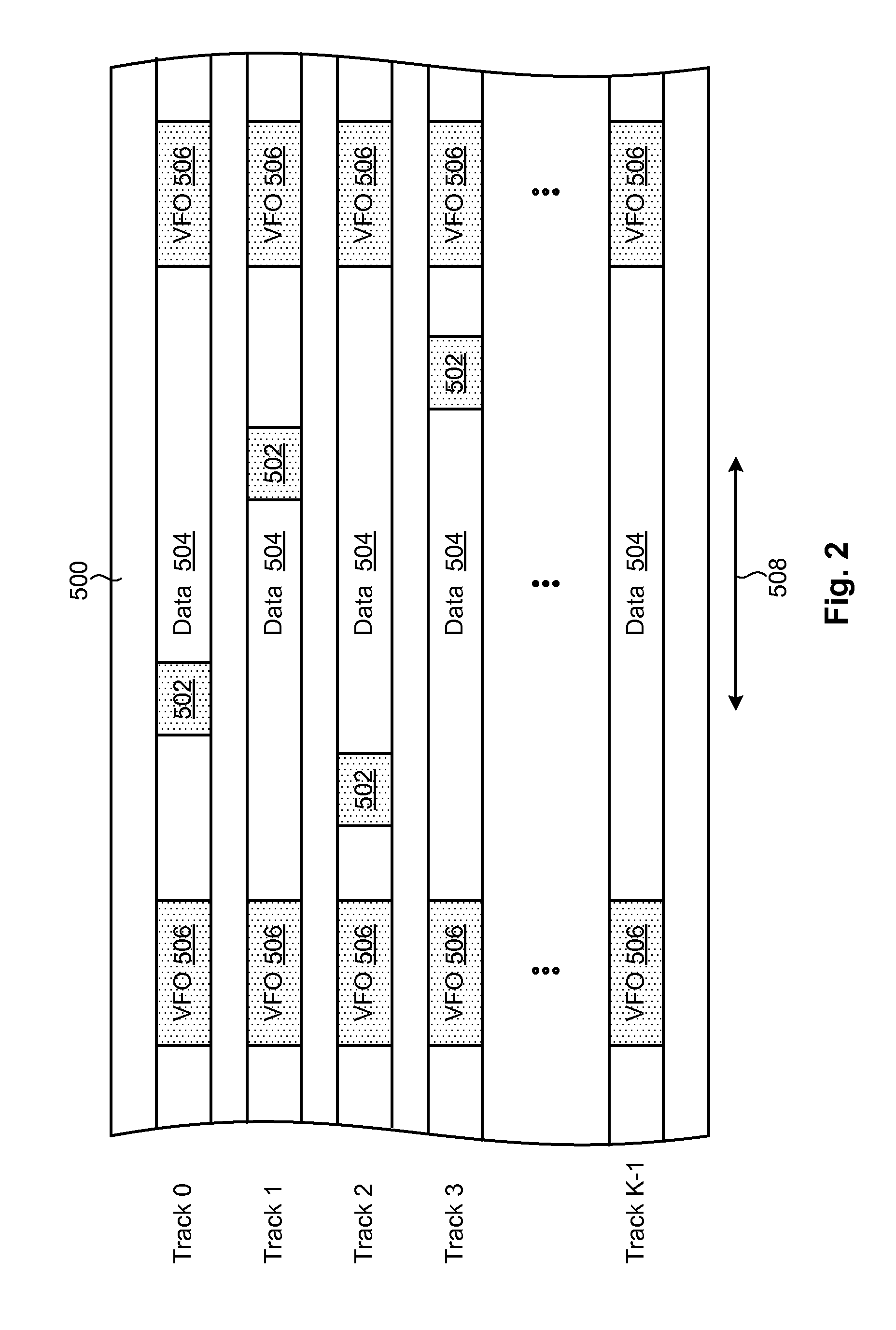Track-dependent data randomization mitigating false vfo detection
a randomization and data technology, applied in the field of magnetic tape recording, can solve problems such as failure of approach, serious systematic problems, and inability to recover data on magnetic tapes, and achieve the effect of mitigating false vfo detection on tape drives
- Summary
- Abstract
- Description
- Claims
- Application Information
AI Technical Summary
Benefits of technology
Problems solved by technology
Method used
Image
Examples
example 1
[0044]Consider a first example where K=32 tracks and L=15 registers. Using these values, a data randomizer 114 will generate a 32767-bit sequence of pseudorandom patterns in a repeating manner—i.e., the period of the sequence is 32767 bits. In this example, the preset value used to initialize the data randomizer 114a for track 0 is a=[0 0 0 0 0 0 010 0 0 0 0 0. The preset value for track 1 is shifted by 996 bytes (i.e., 996×8 bits) relative to the preset value for track 0. This corresponds to a shift of F=7968 clock periods relative to the preset value for track 0.
[0045]The preset values for the remaining tracks may be calculated in a similar manner, where the preset value of track t is shifted by 7968 clock periods from track t-1, where t=1, 2, 3, . . . , 31. In this embodiment, the number of clock periods required to shift the preset value for track t relative to track t-1 corresponds exactly to the number of bits contained in a conventional CWI-4 (a codeword interleave with four ...
example 2
[0049]Consider a second example where K=32 tracks and L=15 registers. Using these values, a data randomizer 114 will generate a 32767-bit sequence of pseudorandom patterns in a repeating manner. In this example, the preset value used to initialize the data randomizer 114a for track 0 is a=[0 0 0 0 0 0 0 1 0 0 0 0 0 0 0]′. The preset value for track 1 is shifted by 996 bits relative to the preset value for track 0. This corresponds to a shift of F=996 clock periods relative to the preset value for track 0. In such an embodiment, the unsorted set c is calculated as follows:
c=(mod([0:996:31*996],(2̂15−1)))={0, 996, 1992, 2988, 3984, 4980, 5976, 6972, 7968, 8964, 9960, 10956, 11952, 12948, 13944, 14940, 15936, 16932, 17928, 18924, 19920, 20916, 21912, 22908, 23904, 24900, 25896, 26892, 27888, 28884, 29880, 30876}
[0050]As can be observed above, due to the much smaller value of F, the preset values do not wrap around. Thus, the preset values are ordered from least to greatest without any ...
PUM
| Property | Measurement | Unit |
|---|---|---|
| distance | aaaaa | aaaaa |
| clock frequencies | aaaaa | aaaaa |
| magnetic | aaaaa | aaaaa |
Abstract
Description
Claims
Application Information
 Login to View More
Login to View More - R&D
- Intellectual Property
- Life Sciences
- Materials
- Tech Scout
- Unparalleled Data Quality
- Higher Quality Content
- 60% Fewer Hallucinations
Browse by: Latest US Patents, China's latest patents, Technical Efficacy Thesaurus, Application Domain, Technology Topic, Popular Technical Reports.
© 2025 PatSnap. All rights reserved.Legal|Privacy policy|Modern Slavery Act Transparency Statement|Sitemap|About US| Contact US: help@patsnap.com



